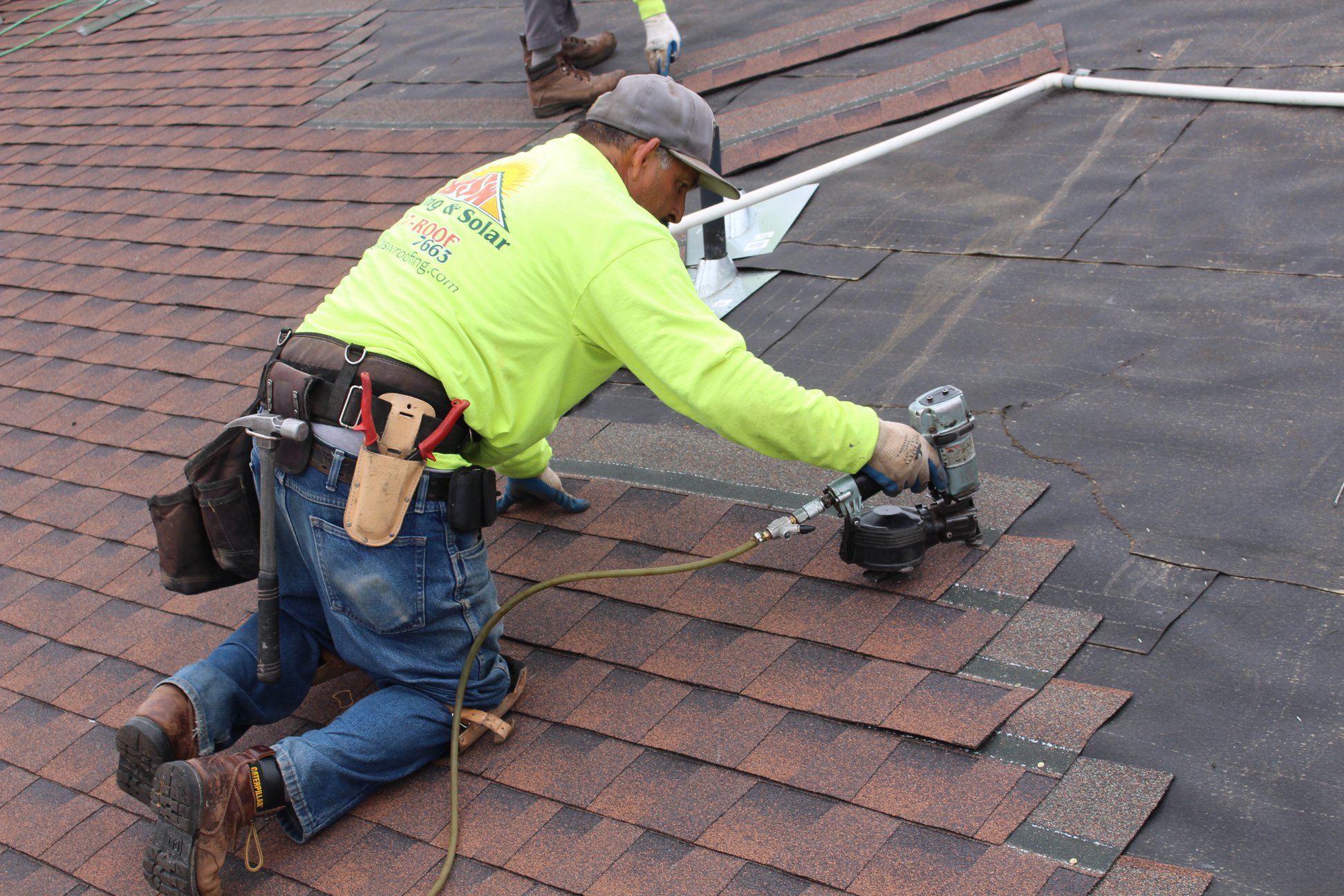Customer Testimonials on the Best Gainesville FL Roofing Companies Available
Customer Testimonials on the Best Gainesville FL Roofing Companies Available
Blog Article
Ideal Practices for Ensuring Proper Roof Air Flow
Making certain correct roof air flow is vital for the longevity and efficiency of a roofing system. A balanced intake and exhaust air vent ratio, typically 1:300, plays a critical role, with intake vents ideally placed at the reduced edge of the roof covering for trendy air entrance and exhaust vents at the optimal for cozy air leave. Normal inspections to recognize obstructions and preserve clear air movement are paramount. In addition, maintaining insulation far from vents is vital to stop air flow restriction. Comprehending these fundamental components sets the phase for even more detailed insights into installation and upkeep methods that can significantly enhance your roof covering system's performance.
Understand Air Flow Essentials
Effectively understanding air flow basics is vital for making sure the durability and effectiveness of roof covering systems. Reliable air flow reduces wetness build-up and temperature extremes in the attic room, both of which can lead to considerable structural damage gradually. A well-ventilated roof covering helps in stopping common problems such as mold development, timber rot, and ice dams, which can endanger the honesty of the roof covering materials and the underlying structures.
The key goal of air flow is to help with the movement of air, enabling for a regular exchange between the interior and outside atmospheres. This balance is accomplished via a mix of intake and exhaust vents that function with each other to preserve optimal air flow. Intake vents, normally situated along the eaves or soffits, enable fresh air to go into the attic area, while exhaust vents, frequently located at or near the roof covering ridge, allow hot, moist air to leave.
Key factors affecting the performance of roofing system air flow consist of appropriate placement, ample sizing, and making certain that both consumption and exhaust vents are unblocked. Normal inspection and upkeep are important to identify prospective obstructions, damage, or inefficiencies in the ventilation system, thus guarding the roof's efficiency and durability.
Kinds Of Roofing Vents
Roof vents play an important duty in preserving effective attic room ventilation and, by expansion, the general health of the roof. Different sorts of roof vents are offered, each with one-of-a-kind benefits tailored to particular roof needs. Ridge vents, as an example, are installed along the roof's peak, allowing cozy, humid air to run away from the attic. They use constant air flow and mix seamlessly with the roofline, making them both effective and aesthetically pleasing.

Soffit vents are installed under the eaves and operate in tandem with roofing vents to ensure a well balanced intake and exhaust system. By enabling cooler air to get in from below, soffit vents assist in the expulsion of hot air with upper vents. Gable vents, located on the outside walls of the attic room, offer one more effective service, specifically in homes with saddleback roofs.
Evaluate Your Existing Ventilation

Next, take into consideration the age Home Page and problem of your roofing products and ventilation components. Older systems might not abide by current building regulations or may have degraded with time, minimizing their performance. Conduct a comprehensive assessment to identify any type of signs of deterioration, such as rust, damages, or spaces that might compromise the system's efficiency.
In addition, gauge the attic temperature level and moisture levels. High temperatures and moisture can indicate insufficient air flow.
Installment Best Practices
Effective installment of roofing air flow systems is vital for making sure optimum efficiency and durability. Correct setup starts with understanding the particular ventilation requirements of the structure and the roofing system it covers. This entails computing the correct ratio of intake to exhaust vents, usually sticking to the 1:300 regulation, which stipulates one square foot of ventilation for each 300 square feet of attic floor area.

The positioning of vents click for info is just as crucial. Intake vents need to be set up at the roofing's reduced edge, typically in the soffits, to enable great air to go into. Exhaust vents, on the other hand, must be mounted near or at the roofing system's height to promote the leave of cozy, wet air. This produces a natural airflow that helps keep temperature level and dampness balance within the attic room.
Seal all vent connections thoroughly to stop air leaks and prospective water seepage. Use top quality products and adhere to manufacturer standards to make certain longevity and effectiveness. Additionally, integrating ridge vents with baffles can substantially boost airflow performance by avoiding wind-driven rainfall and snow from getting in the attic.
Eventually, accurate installment of roof ventilation systems reduces potential issues such as mold and mildew development, ice dams, and architectural damage, guaranteeing the roof's integrity and the structure's overall health.
Regular Upkeep Tips
Consistency in upkeep practices is basic to making sure the long-term efficiency of roofing ventilation systems. Throughout these inspections, make certain that vents are totally free of particles, nests, and other obstructions that can hinder air flow.
Cleaning up the vents is an additional necessary task. Make use of a soft brush or a vacuum cleaner to eliminate dust and particles from consumption and exhaust vents. Be cautious not to damage the air vent displays or louvers throughout the procedure. Furthermore, evaluate the attic room space for any type of signs of water damages, which might endanger the honesty of the roof.
Correct insulation is similarly essential. Make sure that attic insulation does not obstruct the vents, as this can severely restrict air flow. Rearrange or replace it to maintain an efficient obstacle. if any type of insulation has actually changed or settled.
Finally, replace any damaged or missing elements without delay. Damaged vents, fractured tiles, or deteriorated flashing can all add to poor air flow and should be attended to immediately. Routine maintenance guarantees that the roof ventilation system functions optimally, thus prolonging the lifespan of the roofing system itself.
Final Thought
Ensuring proper roof ventilation is vital for keeping visit their website the performance and durability of a roof system. Adherence to the 1:300 consumption and exhaust vent proportion, paired with the calculated placement of vents, is crucial.
A well balanced intake and exhaust air vent ratio, generally 1:300, plays a crucial role, with intake vents preferably positioned at the reduced edge of the roofing for cool air entry and exhaust vents at the peak for cozy air exit. Consumption vents, normally located along the eaves or soffits, permit fresh air to enter the attic room space, while exhaust vents, commonly positioned at or near the roof covering ridge, allow warm, damp air to run away.
Soffit vents are mounted under the eaves and work in tandem with roofing vents to make certain a well balanced consumption and exhaust system. By permitting cooler air to get in from below, soffit vents help with the expulsion of hot air through upper vents. Adherence to the 1:300 intake and exhaust air vent ratio, combined with the strategic placement of vents, is necessary.
Report this page